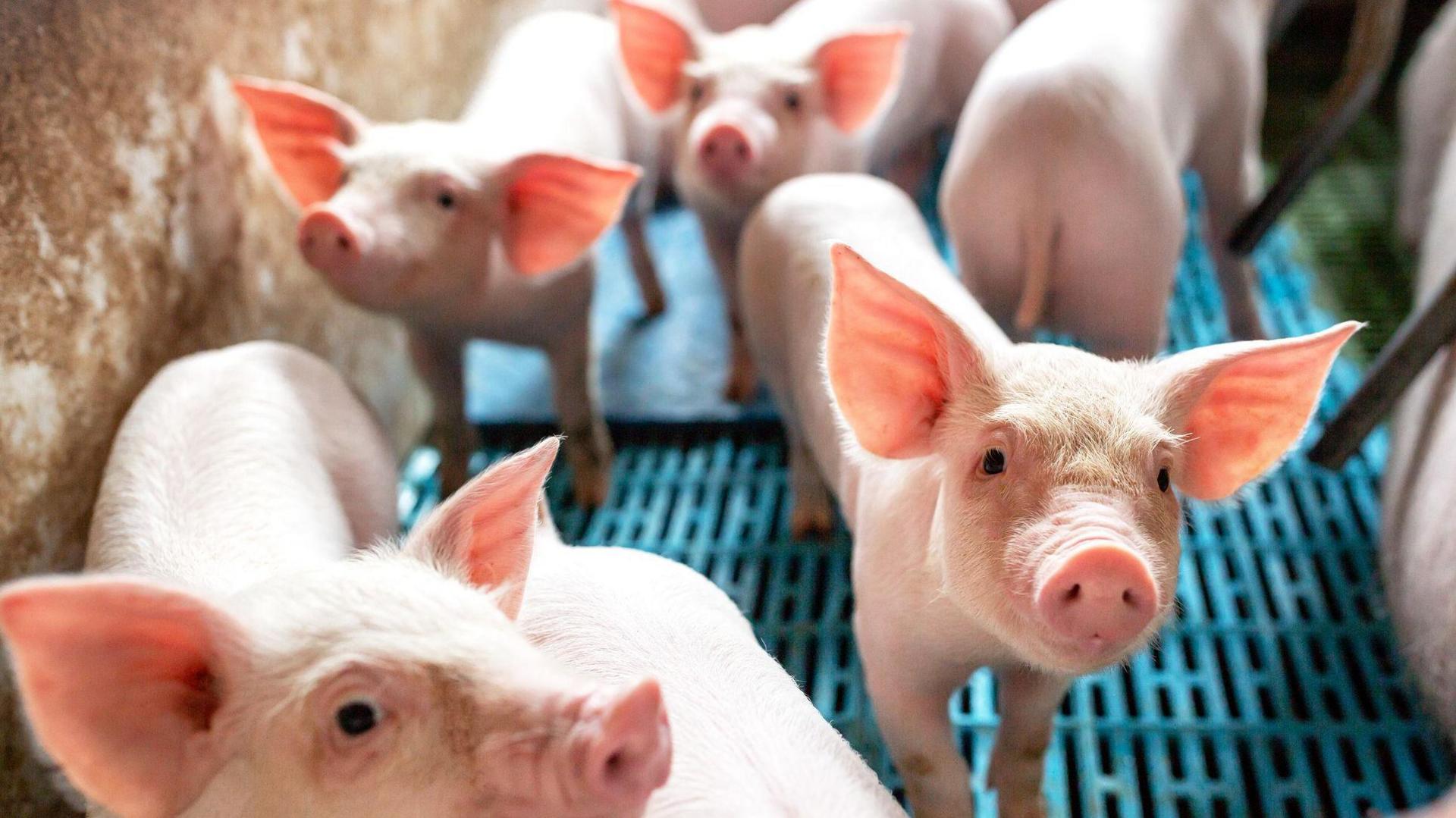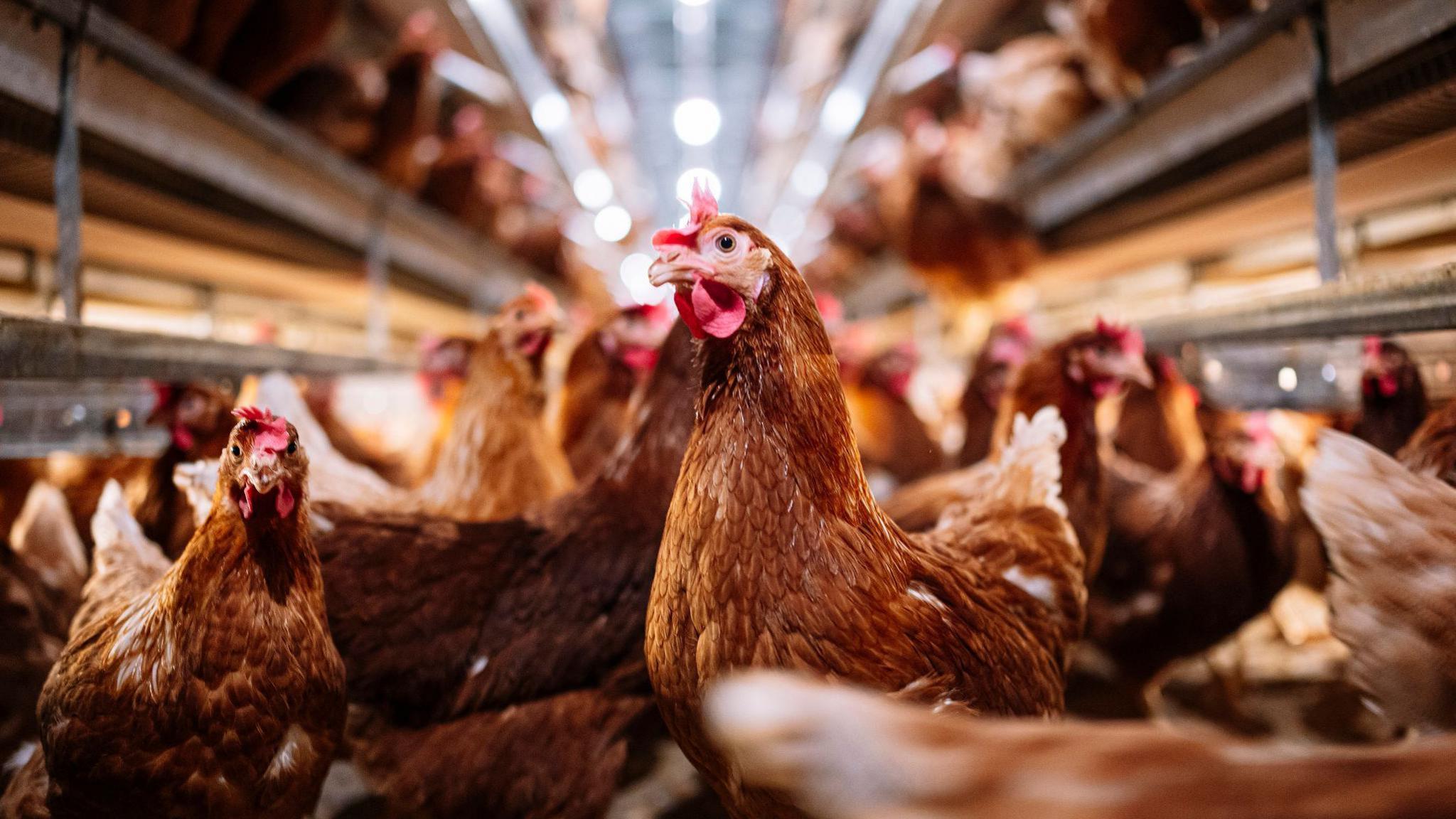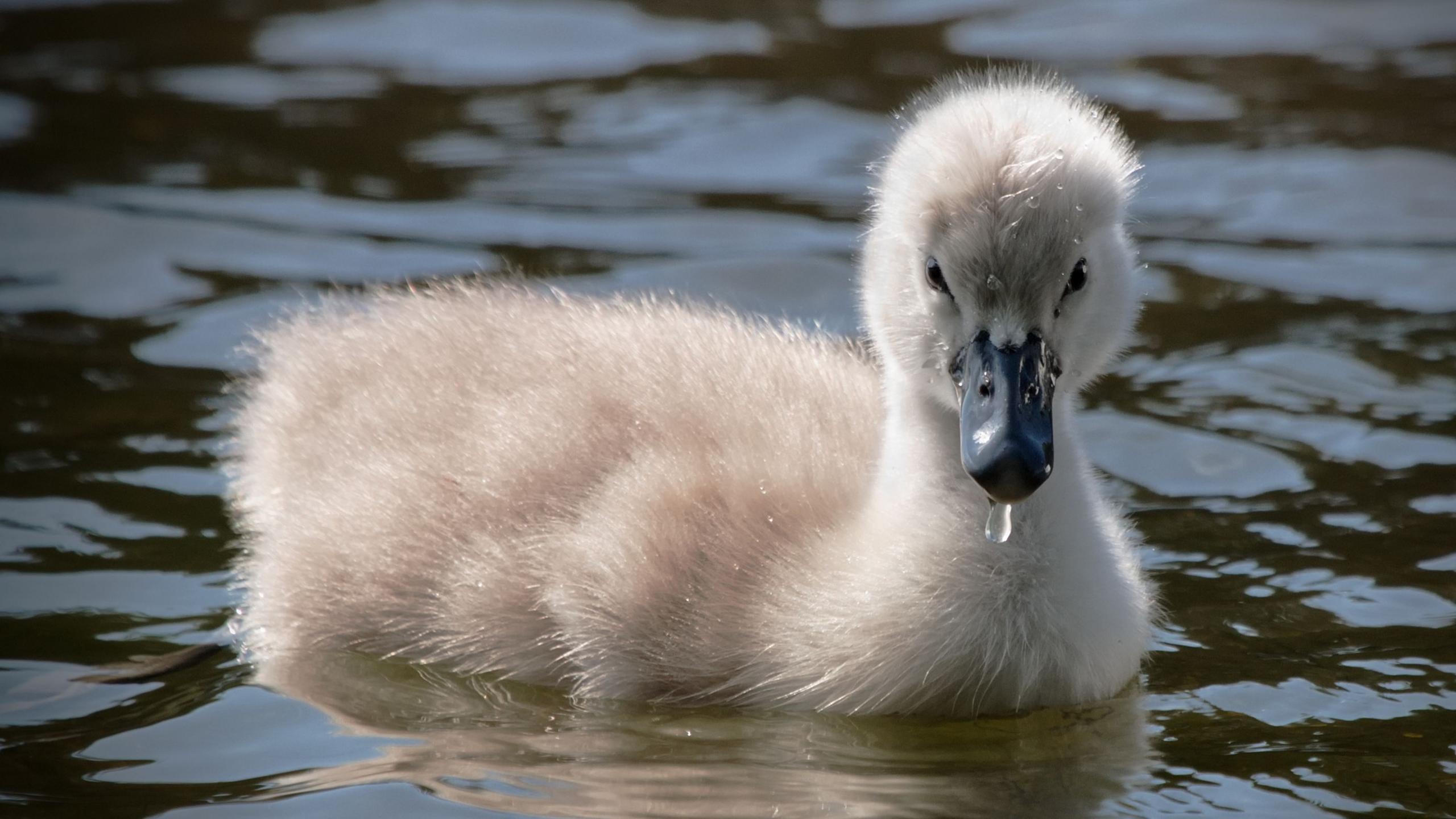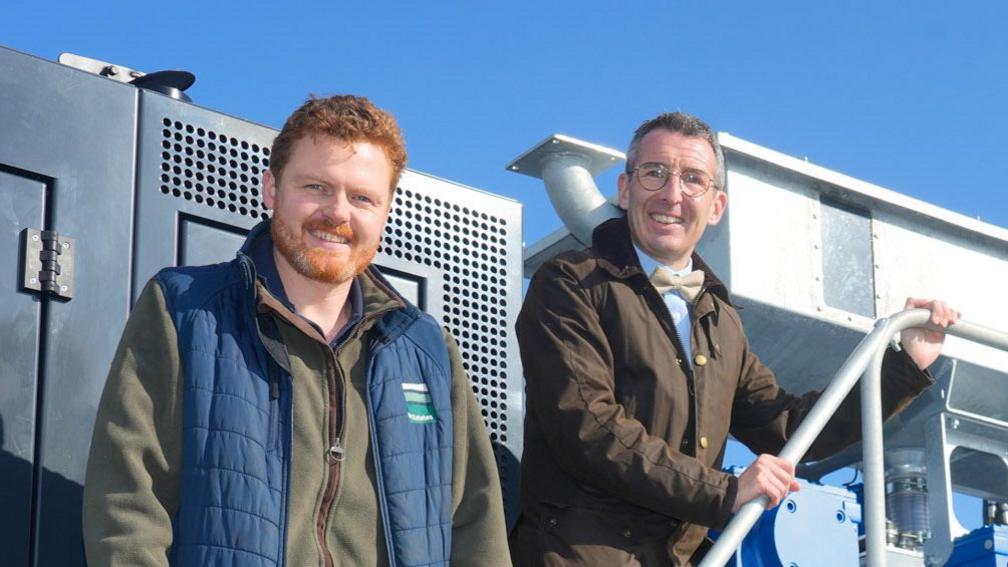How much manure do NI factory farms produce?

An interactive "muck map" shows the quantity of manure that factory farms produce
- Published
New research by environment organisations shows up to 2,555 tonnes of manure are produced in Northern Ireland every day.
The River Bann catchment area is the eighth highest area for manure in the UK, with 1,823 tonnes a day.
Compassion in World Farming, Friends of the Earth and Sustain have compiled an interactive "muck map", external to show the location of factory farms around the UK and the quantity of manure they produce.
The groups have calculated that nearly a million tonnes of manure are produced by factory-farmed chickens and pigs a year in Northern Ireland, based on farms with more than 2,000 pigs or 40,000 poultry.
They say factory farm installations in the UK have risen by 12% between 2016 and 2023, threatening waterways and water quality.
Stormont's Department of Agriculture, Environment and Rural Affairs (Daera) said its minister, Andrew Muir, was "determined to provide the leadership needed to address the issues in Northern Ireland’s waterways".
Daera's spokesperson added Mr Muir has been "clear that collective action and investment across government, the agri-food and public sectors and by the community will be needed".
A recent report by the Office for Environmental Protection found land use and pollution, linked to agricultural intensification, were the principal pressures on nature in Northern Ireland.
The Northern Ireland director of Friends of the Earth, James Orr, said farming intensification under the Going for Growth strategy was "designed to deliver profits for the big international companies at the expense of family farmers, Lough Neagh and public health".
And he added it was "about time" intensive factory farm models were exposed.
"We need a better agricultural system to protect the health of both habitats and human wellbeing."
Mr Orr called for a ban on "all expansion and new intensive units, and funding directed to regenerative farming".
"Farmers should be supported to transition away from the intensive model to a truly sustainable agricultural practice," he said.
Mid Ulster 'has the most manure'

Manure from indoor farm animals is contributing to river pollution, according to Compassion in World Farming
The Going for Growth strategy, developed in 2012, has been described by the current Agriculture and Environment Minister Andrew Muir as "a mistake".
There is now a Green Growth strategy which seeks to balance the need to protect the environment and climate with developing the economy.
The "muck map" is divided into councils, with the Mid Ulster area generating the most manure per day - up to 823.72 tonnes.
This creates 7876.61 tonnes of phosphorus and nitrogen nutrient pollution a year.
Anthony Field from Compassion in World Farming's UK office said the spreading of waste from pigs and poultry housed without access to pasture was "a major contributor" to river pollution in Northern Ireland.
The groups also said soy imported from South America to support feeding animals in factory farms is driving deforestation in the Amazon and harming indigenous peoples.
Ruth Westcott from Sustain called for "regulation to ensure farmers get a fair deal and offering just routes to diversify out of livestock".
In a statement, Daera's spokesperson said the department was "already delivering" on a 37-point plan, agreed by Stormont ministers in July, to address pollution problems in Lough Neagh.
“One key measure to help protect water quality against pollution from agricultural sources is the Nutrients Action Programme (NAP)," they added.
The NAP is currently being reviewed and Daera's spokesperson said it was anticipated that updated NAP regulations will be introduced next year.
“Minister Muir is also committed to strengthening environmental governance and will give further details on that shortly," the statement added.
- Published15 October 2024

- Published14 October 2024

- Published23 July 2024
